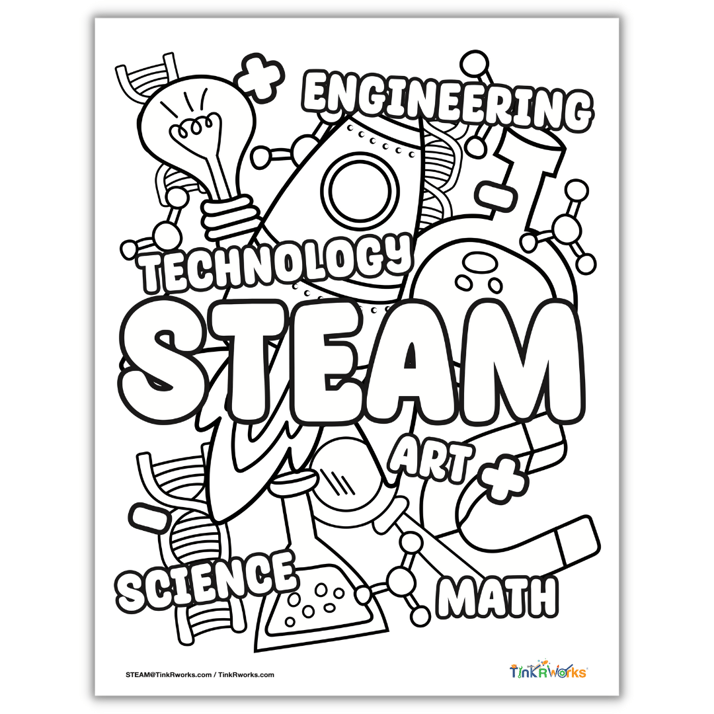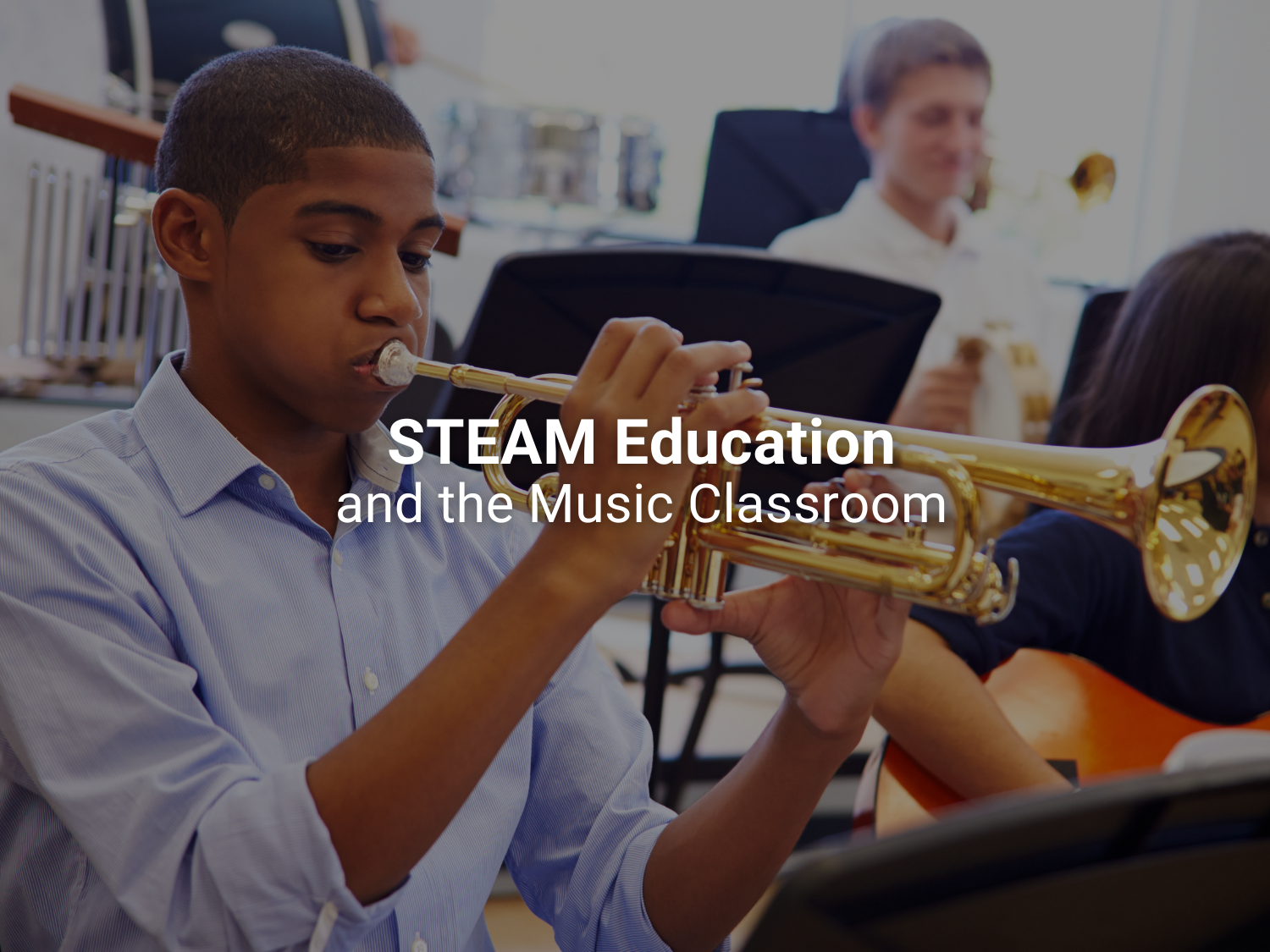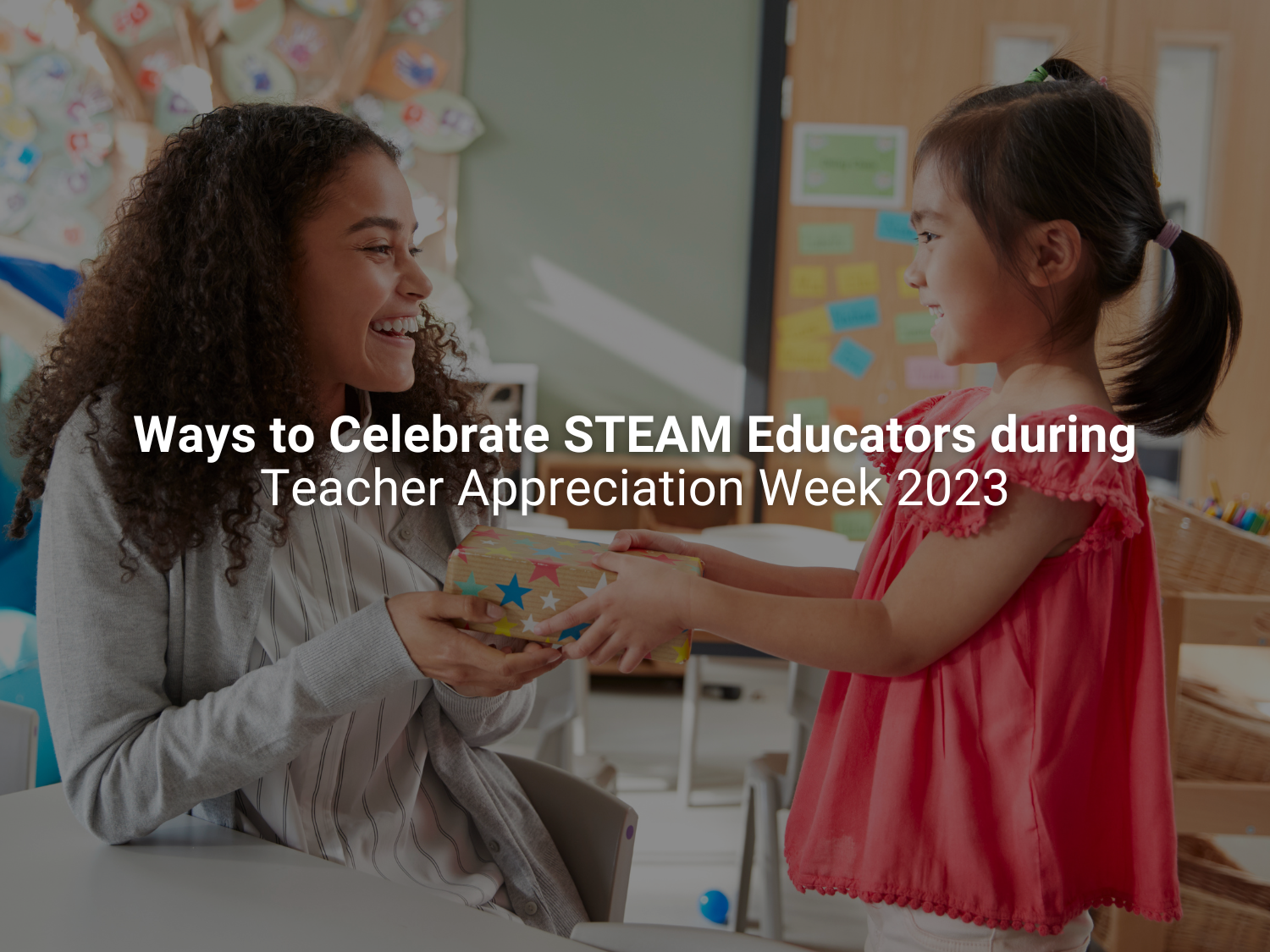Mindfulness in STEM Education
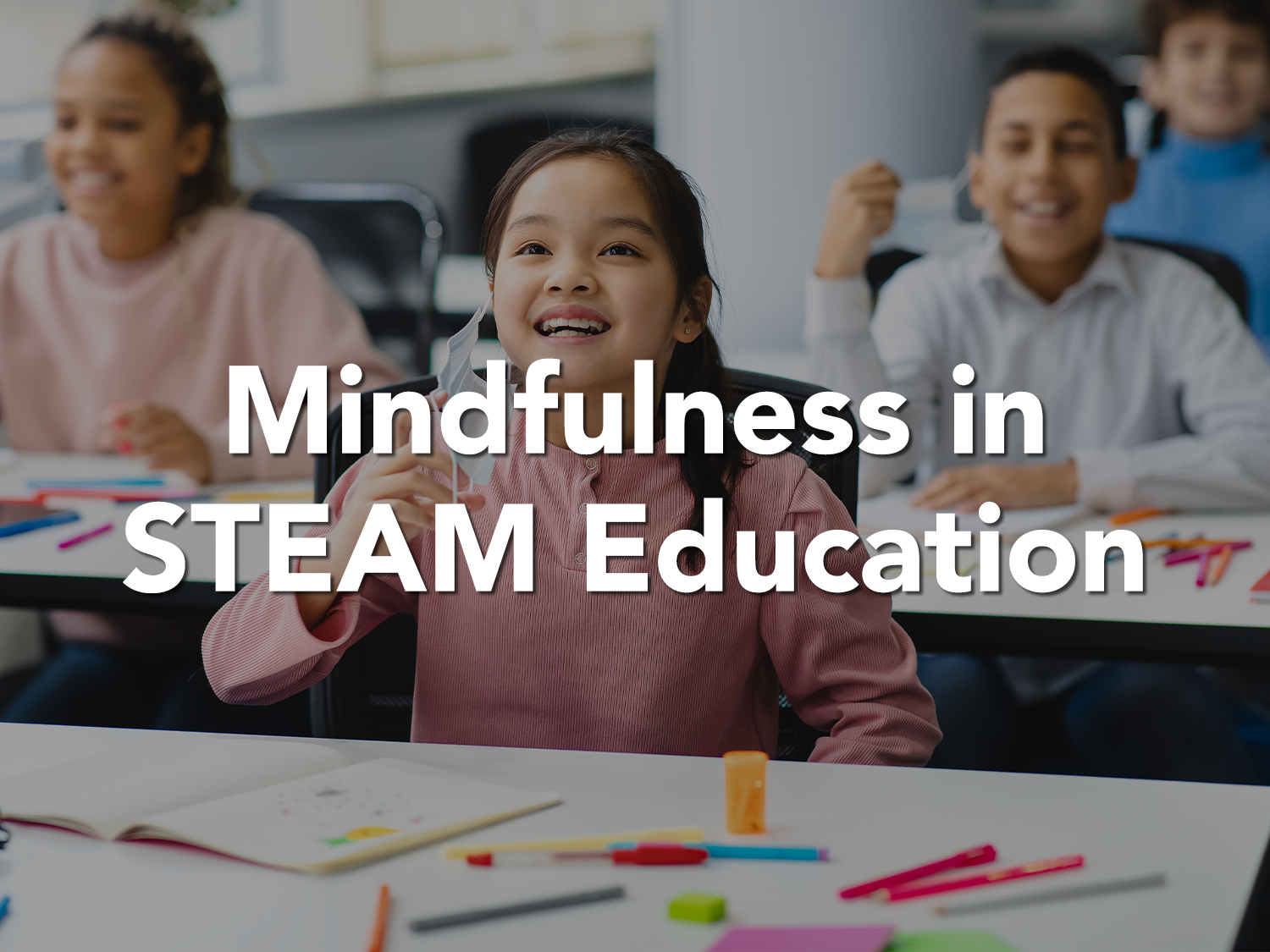
Mindfulness is almost always mentioned as a method of reducing anxiety and stress. And it’s true – studies show that when we are stressed, certain portions of the brain are inactivated and the part of the brain associated with emotions (including both positive and negative emotions) takes over. Mindfulness practice helps mitigate the effects of stress and allows us to better regulate our thoughts and emotions.
In this article, we’ll explore how mindfulness is a proven strategy to help students regulate emotions in the classroom, as well as how you can successfully implement it into your STEAM activities.
Classroom teachers and researchers often work together to help address the many social and emotional challenges that students are experiencing in today’s world. As teachers work to create productive learning environments, they think not only about how their students are doing academically, but also about how they’re doing emotionally.
So how does mindfulness meditation come into play here? Does it have any effect on students’ academic achievements, or does it only help with social-emotional learning?
What is Mindfulness?
Mindfulness is described as paying attention in a particular way: purposefully, in the present moment, and non-judgmentally. Practicing mindfulness challenges and even helps us keep open perspectives on new encounters and accept unique situational circumstances. Some of the most addressed concepts of mindfulness in western scholarship include the ability to stay in touch with one’s self emotionally and an awareness of diverse opinions that influence each moment.
Mindfulness has been shown to benefit behavioral regulation, including self-control and emotion control. Researchers have also acknowledged the possible positive influences mindfulness can have on various types of relationships, and it has been shown to help individuals cope with outside influences that put stress on relationships. Although these relational effects of mindfulness have been primarily studied in romantic relationships, they are also relevant to students of every age for whom relationships and managing emotions and stress are very important.
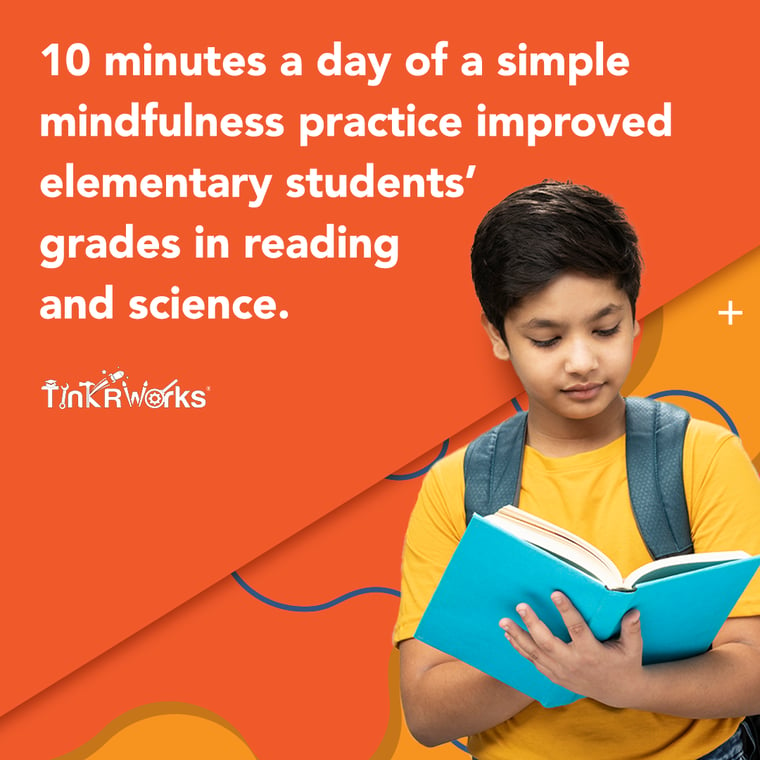
Two Key Benefits of Mindfulness in the Classroom
Research supports the idea that mindfulness not only helps students’ emotional health, but it also benefits academic performance. Multiple studies have found that 10 minutes a day of a simple mindfulness practice improved elementary students’ grades in reading and science. More than 90% of teachers who incorporate mindfulness into their daily classroom time report that their students are more engaged and ready to learn after participating in this practice.
The positive effect that mindfulness seems to have on student learning is commonly explained in at least two ways.
#1 Improves Focus
When classrooms practice mindfulness, they slow down – if only for 10 minutes. There are many ways to approach mindfulness but there is one important principle: quiet down and breathe. Mary V., a fifth-grade teacher in Murrieta, California, says:
“My kids love the ten minutes we take every morning to close our eyes and quietly focus on our breath. All we do is sit quietly at our desks. They know that if thoughts and stressors come to interrupt their mindfulness, they only need to bring their attention back to breathing.”
The research says that when students engage in a frequent practice of mindfulness, even for a short amount of time, they strengthen their skill of being present. Ideally, this strengthened skill can be applied even when they’re not actively being mindful – for example, when they’re studying. This can help them achieve higher academic performance.
#2 Reduces Anxiety
The benefits of meditation for mental health and academic performance are deeply intertwined. One of the reasons why mindfulness meditation is so beneficial for academic performance is because it significantly lessens students’ anxiety.
Anxiety and stress tend to bring academic performance down. Students with high anxiety tend to ruminate on their scary thoughts. This gets in the way of academic achievement because they aren’t engaged in learning. Anxiety gets in the way.
The research shows that students who experience anxiety are, understandably, easily distracted and often lack motivation for learning. Such students often feel inadequate and left behind. Mindfulness practice is a tool that educators can use to help students put aside their fears, even if only for a while, and enable them to focus on learning.
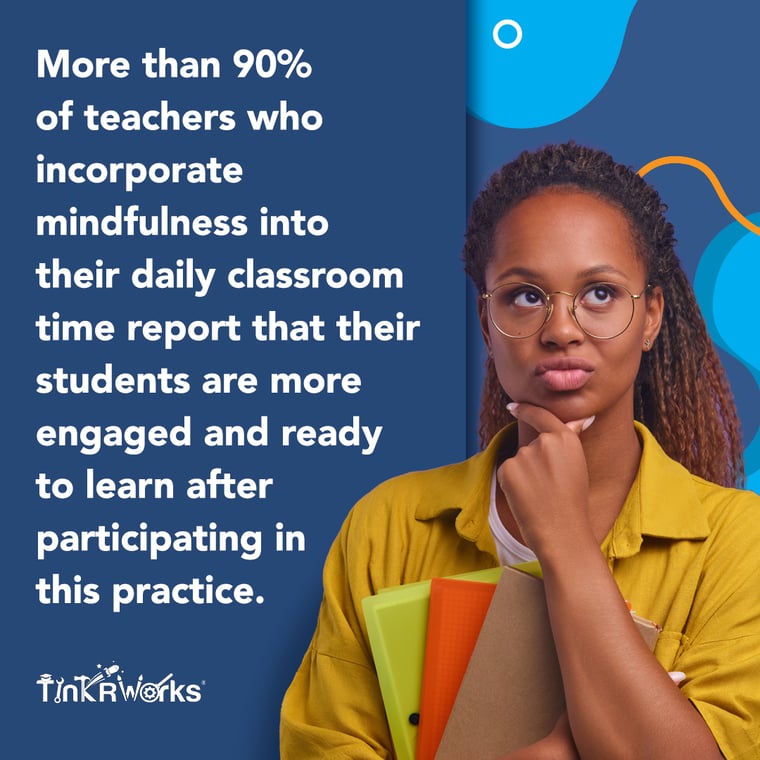
Break Down Common Barriers to STEM Success with Mindfulness
The power of mindfulness in a STEM classroom is how it targets two common barriers to STEM success – math anxiety and gender.
Math anxiety is widely recognized in the classroom. And it’s true that quantitative reasoning and mathematical aptitude are essential for many STEM-related fields. The research tells us that this negative cognitive-affective reaction is characterized as an overwhelming feeling of panic, helplessness, paralysis, and mental disorganization. Math anxiety inhibits learning, creates self-doubt about math competence, leads to poor test performance, and reinforces the initial belief of low self-efficacy. As every educator knows, academic consequences are devastating for these highly math-anxious students, which also diminishes their sense of academic belonging. Mindfulness is calming and strengthens students’ capacity to focus and displace their fears.
Gender is also recognized as a barrier to STEM. Girls, even at a young age, are less likely to embrace STEM in school and even fewer pursue STEM-related fields in college and career. The research tells us that elementary classrooms that provide opportunities for mindfulness better equip all students with the confidence and focus so essential for learning. As Mary V. explains:
“I notice even among my fifth-grade girls a pattern of not believing in themselves. This pops up when we’re solving math problems but also when we’re learning science and programming. One of the best things I’ve seen is pairing mindfulness with STEM projects. This way, I see all my students work together and shine, instead of primarily focusing on individual success.”
How to Get Started with Mindfulness in STEM
Mindfulness isn’t something you can rush. When teaching mindfulness to students, be sure to offer a thorough explanation of what it is, as well as examples of how they can utilize mindfulness in their daily lives. Mindfulness can be a difficult concept for children to grasp, so be sure to offer in-depth background knowledge to help your students get started.
We recommend starting with a kick-off lesson to introduce mindfulness. As mentioned above, before your first class mindfulness exercise, start by making sure every student understands exactly what mindfulness is. First and foremost, mindfulness requires being quiet and letting go of the things that may be in the way of learning.
Whatever physical, mental, and emotional distractions are cluttering students’ heads need to be put in a “box” that will remain closed throughout the learning experience. You can help students visualize this abstract concept by having students decorate a personal safekeeping box. Before the lesson begins, have students write their biggest distractions on paper. Fold and place the paper in the box. Then, allow students a few quiet moments to let go of those distractions from their mind and prepare to learn. They can remove the paper at the end of the lesson and keep or recycle it.
Mindfulness Exercises to do before STEM
Teaching students about mindfulness is easier when you connect it with their physical being. This allows an abstract concept to become more concrete, which helps students better understand.
There are plenty of educator-approved exercises to help students of all ages practice mindfulness. Here are a few simple ones you can do with students prior to STEM/STEAM time.
-
Mindfulness Body Scan: Encourage students to quietly take in how their body feels as they take five deep breaths. Starting at their feet, prompt students to wiggle their toes in their shoes. Tell them to pay attention to how it feels. Next, move up to their knees. Instruct them to bend their knees slightly and acknowledge how it feels. Move up to their waists and ask them to lean side to side. Have them wiggle their fingers, bend their elbows, and raise and lower their shoulders. Finally, ask them to roll their head slowly in circles on their neck. With each movement, instruct students to silently contemplate the feeling of moving through their environment.
-
Emotion Meditation: In addition to physical skills, awareness of emotions and thoughts are important mindfulness skills that you can help students develop through exercises. Start by asking students to stand with their eyes closed. Set a timer for 2-3 minutes. For the first minute, tell them to ask themselves what emotions they are currently feeling. Are they angry about something that happened during recess? Are they worried about a math test? Are they excited about a change happening at home? Allow students 60-90 seconds to mentally tally these emotions. Then, for the next 60-90 seconds, instruct them to breathe deeply and imagine that they are breathing out their emotions on each exhale. As they inhale, they can imagine that breathing in the air of their classroom environment is filling their body and mind with the energy of learning. When time is up, they can open their eyes to begin their lesson.
-
Mindful STEAM Coloring Sheet: A great way to tap into the present moment is through creative expression. Try using our Mindful STEAM Coloring Sheet with students before you launch into your STEM Projects and STEAM Projects. While coloring, have students focus on the colors they’ve chosen, the movements of the lines, the sound of their marker running across the paper. Focusing on these little elements while they color will help them bring awareness to the present moment.
In Conclusion
Mindfulness is such a helpful tool in your toolbelt as an educator. It is a practice that benefits your students in all areas of their lives, but especially in the classroom. Using mindfulness skills to enhance your students’ approach to STEAM lessons can make the entire learning experience more memorable and enriching. You will certainly observe an undeniable difference in student behavior and learning when you utilize mindfulness exercises as a class. With only a few minutes of intentional exercises and practice, you can transform the environment in your classroom to better aid STEAM learning.
-1.png?width=350&height=89&name=TinkRworks%20Logo_Learners%20to%20Innovators%20V2%20(1)-1.png)
